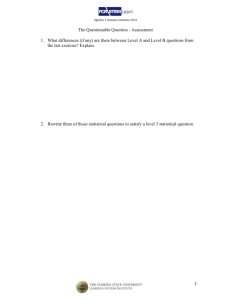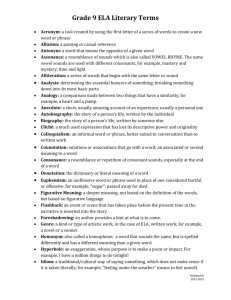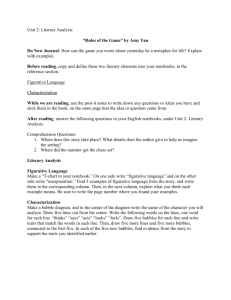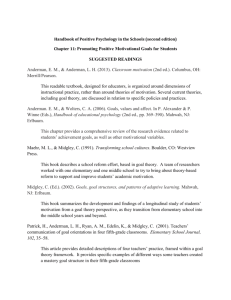Mathematics Performance Level Definitions
advertisement
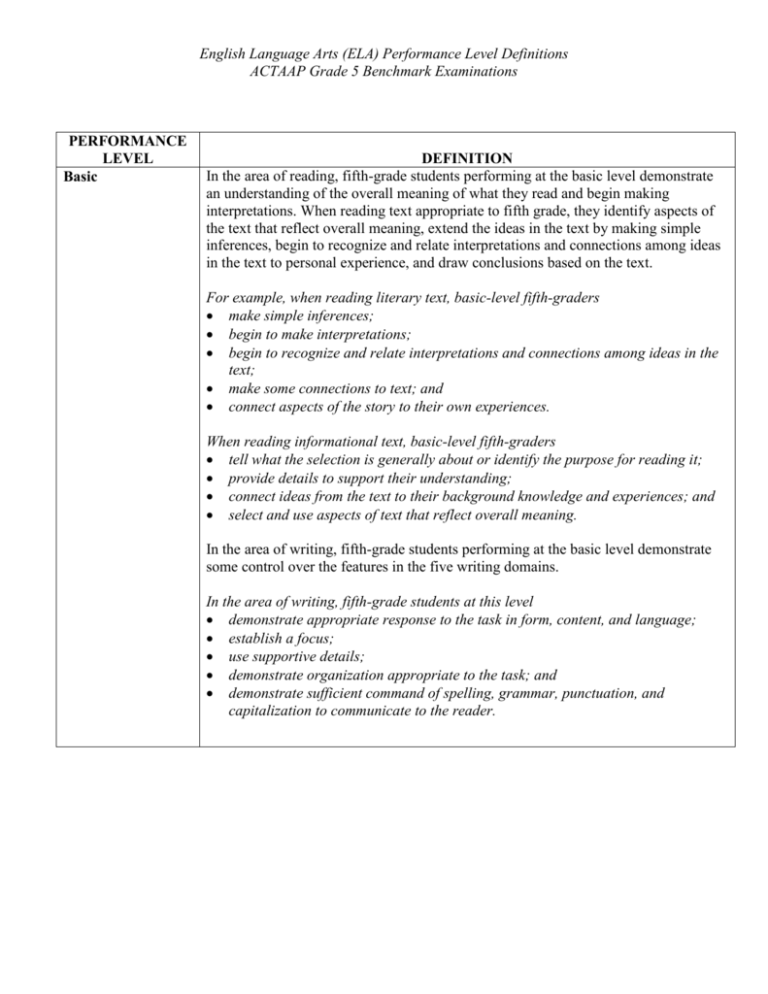
English Language Arts (ELA) Performance Level Definitions ACTAAP Grade 5 Benchmark Examinations English Language Arts (ELA) Performance Level Definitions ACTAAP Grade 5 Benchmark Examinations PERFORMANCE LEVEL Basic DEFINITION In the area of reading, fifth-grade students performing at the basic level demonstrate an understanding of the overall meaning of what they read and begin making interpretations. When reading text appropriate to fifth grade, they identify aspects of the text that reflect overall meaning, extend the ideas in the text by making simple inferences, begin to recognize and relate interpretations and connections among ideas in the text to personal experience, and draw conclusions based on the text. For example, when reading literary text, basic-level fifth-graders make simple inferences; begin to make interpretations; begin to recognize and relate interpretations and connections among ideas in the text; make some connections to text; and connect aspects of the story to their own experiences. When reading informational text, basic-level fifth-graders tell what the selection is generally about or identify the purpose for reading it; provide details to support their understanding; connect ideas from the text to their background knowledge and experiences; and select and use aspects of text that reflect overall meaning. In the area of writing, fifth-grade students performing at the basic level demonstrate some control over the features in the five writing domains. In the area of writing, fifth-grade students at this level demonstrate appropriate response to the task in form, content, and language; establish a focus; use supportive details; demonstrate organization appropriate to the task; and demonstrate sufficient command of spelling, grammar, punctuation, and capitalization to communicate to the reader. Proficient English Language Arts (ELA) Performance Level Definitions ACTAAP Grade 5 Benchmark Examinations In the area of reading, fifth-grade students performing at the proficient level demonstrate an overall understanding of the text, providing inferential, as well as literal, information. When reading text appropriate to fifth grade, they are able to extend ideas in the text, draw conclusions, and make connections to their own experiences, including other reading experiences. The connections between the text and what the students infer are clear. Specifically, when reading literary text, proficient-level fifth-graders summarize the story; begin to make inferences; draw conclusions about the characters or plot; recognize relationships, such as cause and effect; and identify sources of information (references). When reading informational text, proficient-level fifth-graders summarize the information and identify the author’s intent or purpose; draw reasonable conclusions from the text and recognize relationships, such as cause and effect or similarities and differences; identify the meaning of the selection’s key concepts; and select and begin to analyze a variety of information from various sources. In the area of writing, fifth-grade students performing at the proficient level demonstrate reasonable control over the features in the five writing domains. In the area of writing, fifth-grade students at this level create an effective response to the task in form, content, and language generally consistent with the audience and purpose; express basic analytical and/or creative thinking; use organization appropriate to the task; use basic transitions; use sufficient elaboration to clarify and enhance the central idea; use language (e.g., variety of word choice and sentence structure) appropriate to the task; have few errors in spelling, grammar, punctuation, and capitalization that interfere with communication; and use some strategies, such as examples and figurative language. Advanced English Language Arts (ELA) Performance Level Definitions ACTAAP Grade 5 Benchmark Examinations In the area of reading, fifth-grade students performing at the advanced level describe the themes and ideas of the overall text, consistently generalize about topics in the reading selection, and demonstrate an awareness of how authors compose and use literary devices in various genres. When reading text appropriate to fifth grade, they are able to judge texts critically and, in general, give thorough answers that indicate careful thought and extend text information by relating it to their experiences. Specifically, when reading literary text, advanced-level fifth-graders make generalizations about the point of the story; extend the story’s meaning by integrating personal and other reading experiences with ideas suggested by the text; identify literary devices such as figurative language; and describe themes and ideas of the overall text. When reading informational text, advanced-level fifth-graders explain the author’s intent by using supportive material from the text; make critical judgments of the text, including its form and content, and explain their judgments clearly; and analyze a variety of information from various sources. In the area of writing, fifth-grade students performing at the advanced level demonstrate consistent control over the features in the five writing domains. In the area of writing, fifth-grade students at this level create an effective and elaborated response to the task in form, content, and language consistent with audience and purpose; express analytical, critical, and/or creative thinking; have unity in style, form, and content in response to writing task; use logical organization appropriate to the task; show effective use of transitional elements; elaborate and enhance the central idea with descriptive and supportive details; use language appropriate to the task; demonstrate varied use of language (e.g., variety of word choice and sentence structures); use a variety of strategies such as illustrations, examples, and figurative language; and enhance meaning through control of spelling, grammar, punctuation, and capitalization.
